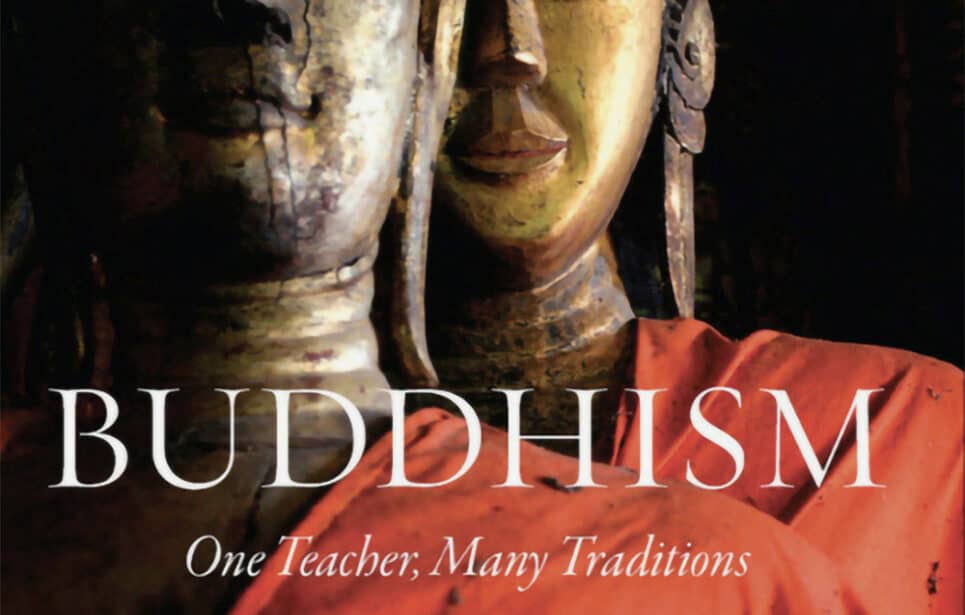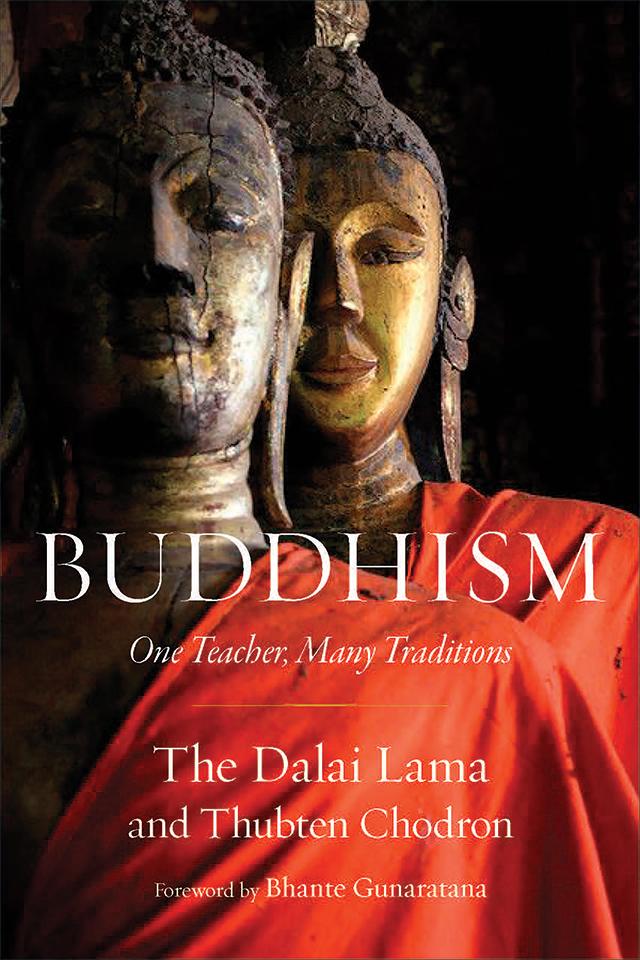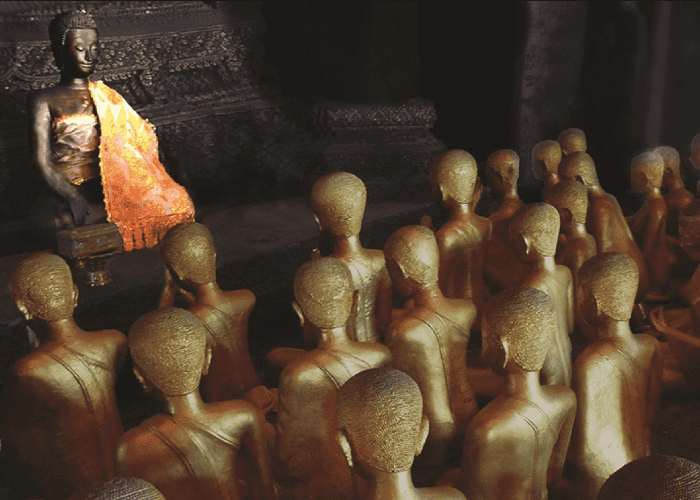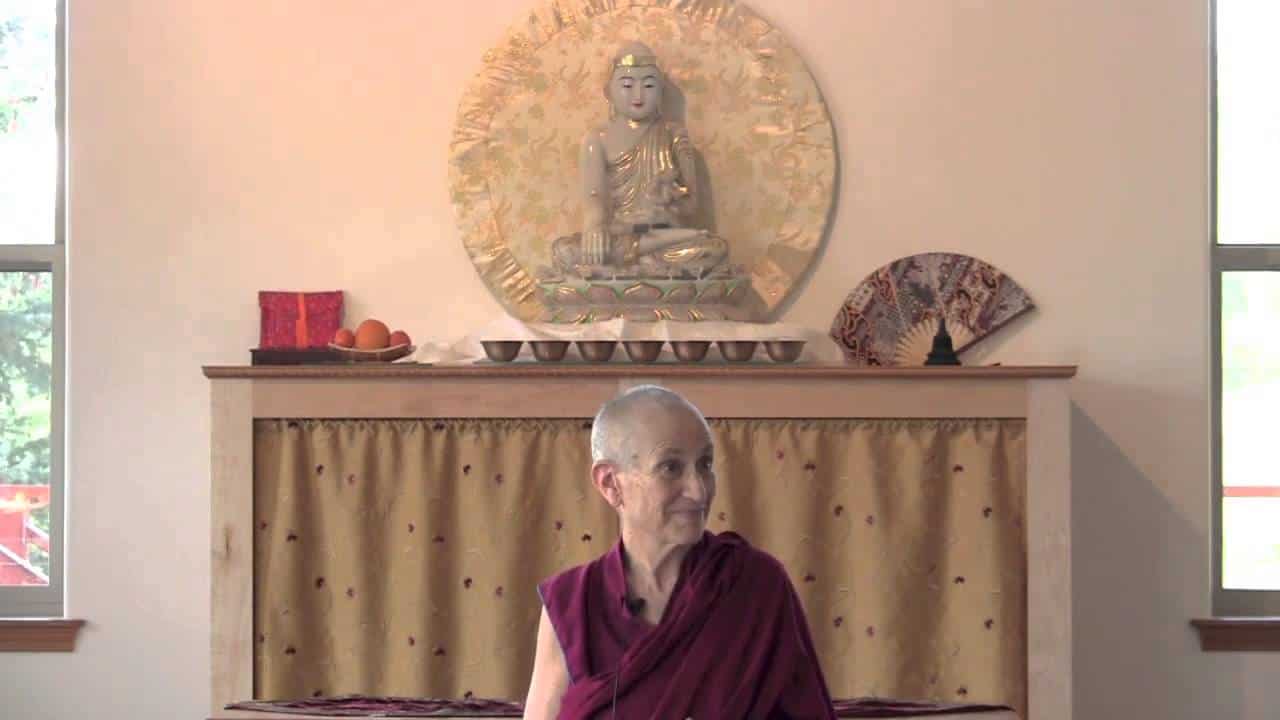The Buddha’s teachings
Preface to Buddhism: One Teacher, Many Traditions

A book showing the commonalities and unique points of various Buddhist traditions could have been approached from any number of perspectives. As Buddhists, we all bow to the Buddha, make offerings, and confess our ethical downfalls. We engage in meditation, chanting, study and recitation of sūtras, and listening to teachings. All of our communities have temples, monasteries, hermitages, and centers. Explaining the similarities and differences among these external activities would certainly aid our mutual understanding.
This book, however, focuses on the teachings—the shared tenets and the unique tenets of what we are calling the “Pāli tradition” and the “Sanskrit tradition.” These are terms of convenience and should not be taken to imply that either tradition is homogenous. Both traditions trace their teachings and practices back to the Buddha himself. The Pāli tradition is descendant from the suttas and commentaries in Prakrit, in the old Sinhala language, and in Pāli. It relies on the Pāli canon and currently is found principally in Sri Lanka, Burma, Thailand, Cambodia, Laos, and parts of Vietnam and Bangladesh. The Sanskrit tradition descends from sūtras and commentaries in Prakrit, Sanskrit, and Central Asian languages and relies on the Chinese and Tibetan canons. It is currently practiced principally in Tibet, China, Taiwan, Korea, Japan, Mongolia, Nepal, the Himalayan region, Vietnam, and parts of Russia. Both traditions are found in Malaysia, Singapore, Indonesia, India, and in Western and African countries.
While stemming from the same Teacher, the Buddha, the Pāli tradition and the Sanskrit tradition each has its own distinctive features, unique contributions, and different points of emphasis. In addition, neither tradition is monolithic. The Buddhism of East Asia and Tibetan Buddhism, for example, are quite different in expression. But because they both stem from a similar body of Sanskrit texts and share many similar beliefs, they are included in the expression “the Sanskrit tradition.”
Topics in this book are largely described from a prevalent viewpoint in each tradition. This may differ from how a subtradition or an individual teacher approaches a topic. In some instances, we had to select one presentation among many to put in this book. For example, in the chapter on selflessness (not self), among all the views in the Sanskrit tradition, we explained the Prāsaṅgika Madhyamaka view as presented by Tsongkhapa. In other cases, we explained a topic—for example, bodhicitta—according to the Tibetan presentation and then gave distinctive features from the Chinese presentation.
There is a tremendous body of literature in both traditions, and deciding what to include in this book was not easy. His Holiness the Dalai Lama and I would have liked to include or elaborate upon many more points, but the book would have become too lengthy. We apologize for not being able to discuss the wide variety of views, interpretations, and practices within each tradition and request your patience if certain topics you consider important are absent or condensed. Quotes from scripture we wanted to include have been omitted due to space concerns, as have titles and epithets.
Many of this book’s readers will undoubtedly be learned in their own Buddhist tradition. When reading descriptions, or even textual translations, from traditions different than one’s own, the thought may arise, “This is incorrect.” At this time please recall that other traditions may use different words to express the same meaning as in one’s own tradition. Recall also the benefit arising from knowledge of the diversity of the Buddha’s teachings.
This volume was conceived by His Holiness to promote greater mutual understanding among Buddhists worldwide. I feel deeply fortunate that he has trusted me to carry out this most beneficial endeavor. His Holiness contributed most of the teachings from the Sanskrit tradition. I wrote them up from public teachings he gave as well as from a series of private interviews I had with him over the years. These were translated by Geshe Lhakdor, Geshe Dorji Damdul, and Geshe Thupten Jinpa. Geshe Dorji Damdul and Geshe Dadul Namgyal checked this part of the manuscript. The writings of Chinese masters such as Zongmi, Yinshun, Hanshan Deqing, Shixian, Jizang, Taixu, and Ouyi Zhixu and interviews with Bhikṣu Houkuan, Bhikṣu Huifeng, Bhikṣu Dharmamitra, Bhikṣu Jian-hu, Dr. Lin Chen-kuo, and Dr. Wan Jing-chuang were some of the sources for Chinese Buddhism. Since I received bhikṣuṇī ordination in Taiwan, I have a heartfelt connection with that tradition. Reading the Pāli suttas, the writings of Buddhaghosa and Dhammapāla, and the teachings of contemporary authors such as Ledi Sayadaw, Ñāṇamoli Thera, Nyanaponika Thera, Soma Thera, Bhikkhu Bodhi, and Bhikkhu Anālayo opened my eyes to the beauty of the Pāli tradition. I studied Bhikkhu Bodhi’s series of 123 talks on the Majjhima Nikāya, and he very generously clarified many points for me in personal correspondence. He also checked the parts of this book describing the Pāli tradition. His Holiness also asked me to visit Thailand and study and practice at a monastery there, which I did for two weeks.
Pāli and Sanskrit are linguistically similar but not identical. Because some terms, such as meditative stabilization, are unwieldy in English, the Pāli and Sanskrit terms—here jhāna and dhyāna—have sometimes been used instead. In some chapters the Pāli and Sanskrit presentations of a topic are given in separate sections; in other chapters they are presented in parallel. Whenever Pāli perspectives are given, the spelling of terms will be in Pāli; Sanskrit perspectives will contain Sanskrit spellings. When two terms are in parentheses, the first is Pāli, the second Sanskrit. When only one term is present, either it is the same in both languages, or it corresponds with the tradition whose perspective is discussed in that passage. Pāli and Sanskrit terms are usually given in parentheses only for the first usage of a word. When Pāli and Sanskrit terms are left untranslated, only initial usages are italicized.
The English “four noble truths” has been replaced by a more accurate translation—“four truths of the āryas (ariyas),” which is often abbreviated to “four truths.”
There are several English terms that followers of the Pāli tradition may find different than what they are used to. On the first occurrence of such terms, I tried to reference the more familiar English term. There will be translation choices for Sanskrit words that are unfamiliar to some readers as well. This is unavoidable, and I request your tolerance.
All errors, inconsistencies, and any points that may be inappropriate are due to my ignorance alone, and I request your patience with these. They do not in any way reflect on His Holiness.
Venerable Thubten Chodron
Venerable Chodron emphasizes the practical application of Buddha’s teachings in our daily lives and is especially skilled at explaining them in ways easily understood and practiced by Westerners. She is well known for her warm, humorous, and lucid teachings. She was ordained as a Buddhist nun in 1977 by Kyabje Ling Rinpoche in Dharamsala, India, and in 1986 she received bhikshuni (full) ordination in Taiwan. Read her full bio.



